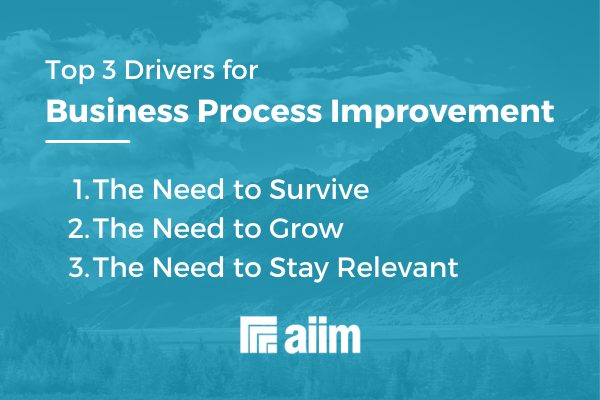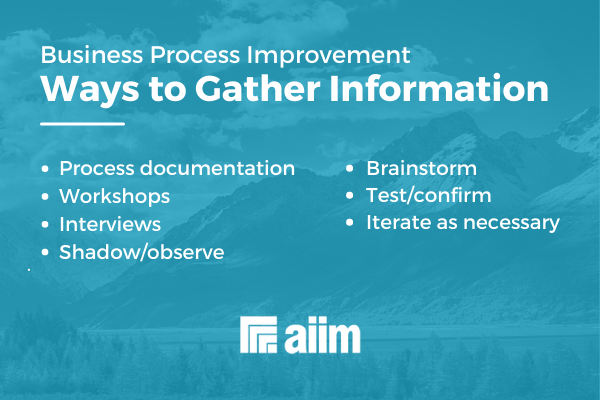
By: Anthony Paille on March 14th, 2022
How to Analyze a Business Process
Business Process Management (BPM) | Process Improvement
There are some chores I love, many I don’t mind, and a few that sap my will to live. Folding laundry falls into the soul-crushing category. I’ve tried doing it while I watch the Price is Right or rock out to Taylor Swift (yes, she’s my guilty pleasure!), but nothing distracts me from the monotony of that task. And my least favorite part about it has always been trying to match the socks.
I’ll resist the urge to repeat every standup act from the 90s about where that missing sock goes. But seriously, where does it go? And why do so many socks look alike, but they’re not really a pair?
One day, I was folding laundry when I was struck by lightning. What if all of my socks matched? Why don’t I just throw every last sock away and buy all new socks of a single style? And then, I’ll never have to match them again. I don’t even have to fold them. I could just put them all in the sock drawer. If one goes missing, it doesn’t matter because I have dozens just like it. This was a major improvement to my laundry folding process.
There are business processes in your organization that are just as frustrating to your coworkers and customers as matching socks were to me. Businesses are a bit more complicated, however. Before you change a business process, you must fully understand how it’s currently being done, why, and who is affected by each step.
In this article, I'll share:
- The steps required to analyze an existing business process
- How to identify all of the stakeholders of a business process
- The common mistakes to avoid when changing a business process
Let’s begin by looking at why business processes need to change.
Why Should I Change a Business Process?
There are many strategic reasons for wanting to change a business process. The three we hear about from our members the most are:

-
The need to survive. Reducing costs and the time to complete key tasks are often big factors in organizational sustainability. These measures are most often identified and initiated by senior management.
-
The need to grow. All organizations strive for revenue and customer growth. As customer demands change and their expectations increase, organizations must focus on the process improvements that will deliver better value to customers and partners. Improving satisfaction is an important ingredient of growth in customers and revenues.
-
The need to stay relevant. The pace of change is accelerating. That's one of the biggest reasons for the current resurgence in business process management. While organizations all over the world are reaching a tipping point for maximizing efficiencies in their processes, new market entrants are disrupting the space with dramatically different business models.
Identifying the reason or combination of reasons driving a particular process improvement project will inform and impact how the project is shaped and executed.
Your next step is to gather as much information as you can to understand the full scope of the process.
What Information Should I Gather Before Improving a Business Process?
Most people embark on process improvement projects and don’t know what information they need to gather about the process in the beginning. Some analysts simply go about gathering information in general, as though volume were a substitute for quality. To be effective, you need to be clear about what it is that you're looking for and have some idea of where you might find it. Avoid the tendency to gather a lot of information that you don’t need or information that isn’t relevant.
You need to define and plan the collection activities in terms of when, from whom, and from where you’re going to collect information. When thinking about where, specifically ask:
- Is this information sitting in a document?
- Is it sitting in somebody’s head?
- Is it contained within an IT system?
You should always be aware of and coordinate with other relevant projects. Often, the more you delve into a particular process, the more you find it interrelated, entwined, and dependent upon other processes. It's always good to know about other projects, and it's helpful to find out at the planning stage.
Who to Gather Information From
The collection of information involves a series of activities. First, identify the key stakeholders for the process. This should include the process owner, the process participants, and anyone who is impacted by the process.
Who actually matters in this process? Who cares about this process, and who should care about this process? It could be individuals, or it could be groups or departments. Or it could be roles like accounts clerk, credit control clerk, delivery staff, and so forth. These roles need to be identified before you start to gather information.
Ways to Gather Information
Next, you need to define how you will capture and eventually deliver the information. If your analysts gather information in different ways, you may find it to be incompatible when you try to pull it together. You need to define a method of collection and think ahead about how it might be collated. For example, interview notes could be held as audio files, shorthand notes, handwritten notes, or typed-up notes. Will the interviews be structured in some way, or just be notes from a conversation?
Here are just some of the ways to gather information about a business process:

- Existing process documentation
- Workshops
- Interviews
- Shadow/observe
- Brainstorm
- Test/confirm
- Iterate as necessary
Of these, reviewing the documentation that already exists is one of the most important. Keep in mind that, even if a particular activity seems chaotic, it may still be documented somewhere. And, just because a process is documented doesn’t mean that its steps are followed.
One of the best ways to refine and clarify elements of a process is to take what you’ve gathered and observed back to the stakeholders with your statement of how the process works. This is the testing and confirmation phase.
Finally, you should repeat as necessary. Gathering information often requires iteration as exceptions are remembered, other steps or stakeholders identified, and information is verified or shown to be inaccurate or incomplete.
Common Process Improvement Pitfalls to Avoid
Before you get started, we want to help you avoid all of the common pitfalls associated with changing a business process.
First, never underestimate the value and importance of business analysis. This might seem like a generic and simple task to perform. The reality is that failure to execute this properly will result in disappointing results. Proper business analysis may well be the largest success factor in your project.
Similarly, never underestimate the need for trained and competent analysts to affect process change. These skilled individuals are difficult to find.
Finally, be prepared to manage stakeholders’ expectations. Many projects fail because insufficient attention is paid to how stakeholders are feeling, including management’s lack of interest and employees’ push-back. The unique culture of your organization has an enormous influence on these attitudes and perceptions.
Conclusion
Remember that proper business analysis needs someone with the knowledge and expertise to do this. Allowing a trained analyst to fully understand processes before effecting change holds incredible value for an organization.
Now, set forth and analyze all of the business processes that need to be improved. Your customers and coworkers will love you for it!


